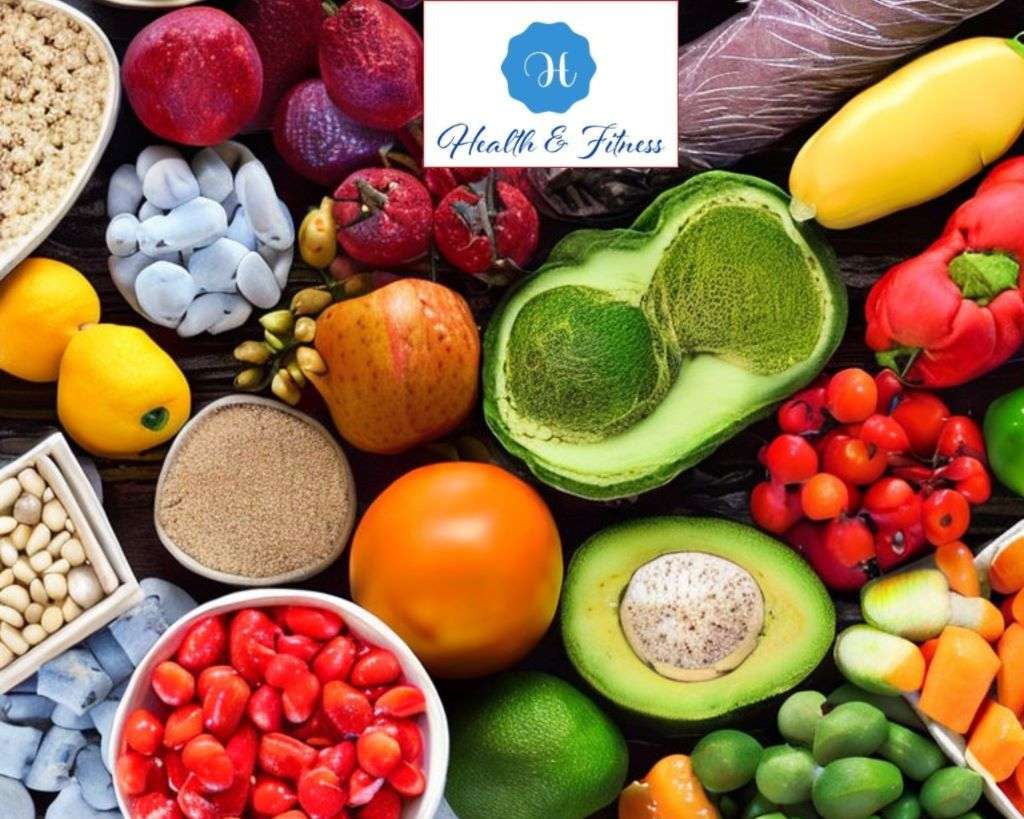The Best 17 foods for people living with diabetes: Expert Guide
Discover the best 17 foods for people living with diabetes carefully selected to support blood sugar management and overall health. Learn about diabetes-friendly dietary options that nourish and empower you to make informed food choices. Embrace a balanced and delicious diet that complements your diabetes management
journey. Fuel Your Body Right: Top 17 foods for People Living with Diabetes for Optimal Health Living with diabetes can be challenging, especially when it comes to choosing the right foods to manage blood sugar levels. However, a diabetes-friendly diet doesn’t have to be boring or restrictive. Many tasty and healthful options exist that can aid in maintaining healthy blood sugar levels. In this article, we’ve compiled a list of the top 17 diabetes-
Friendly foods you can incorporate into your diet. Low on the glycemic index and strong in fiber, these meals are a healthy choice, making them ideal for people living with diabetes. Whether you’re looking for a healthy snack or a nutritious meal, you’ll find plenty of options on this list.
Diabetes and the importance of diet in managing blood sugar levels

Diabetes is a metabolic disorder where glucose isn’t properly used, causing health issues. Managing blood sugar through diet is crucial for health.
“Unlock the top 17 foods for people living with diabetes! For managing diabetes, it’s important to pay attention to the type and amount of carbohydrates, fats, and proteins in the diet. The greatest effect on blood sugar levels is from carbohydrates., so it’s essential to choose foods with a low glycemic index, which means they don’t cause a rapid spike in blood sugar. Our expert guide provides essential insights for better health.
In addition, foods high in fiber, such as whole grains, fruits, and vegetables, can help slow down the absorption of carbohydrates and stabilize blood sugar levels. Overall, a healthy diet that is rich in nutrients, low in processed foods, and well-balanced can play a significant role in managing diabetes and improving overall health.
Criteria for selecting diabetes-friendly foods

For managing diabetes, the foods you choose can have a significant impact on blood sugar levels. To select diabetes-friendly foods, it’s essential to understand how macronutrients affect blood sugar and the criteria to look for when selecting foods.
1- Glycemic Index (GI)
How much food contributes to a rise in blood sugar is quantified by something called the glycemic index. Meals high on the glycemic index are metabolized rapidly, leading to a dramatic rise in blood sugar levels, while foods with a low glycemic index are slowly digested and cause a more gradual increase in blood sugar. For people with diabetes, to prevent drastic swings in blood sugar, Low-glycemic foods are the ones you should prioritize. Non-starchy veggies, whole grains, nuts, and seeds are all examples of low-glycemic foods.
2- Fiber Content
Fiber is an essential nutrient that can help slow down the absorption of carbohydrates, causing a decrease in fluctuations in blood sugar levels. Besides making you feel content for longer, foods high in fiber help you feel fuller with less food. Which can aid in weight management. When selecting diabetes-friendly foods, it’s essential to choose foods that are high in fiber. Some examples of high-fiber foods include whole grains, fruits, vegetables, beans, and legumes.
3- Nutrient Density
Food is said to be “nutrient dense” if it contains a lot of healthy micronutrients. Although low in calories.
These foods provide the body with the nutrients it needs to function properly without contributing to weight gain.
When selecting diabetes-friendly foods, it’s essential to choose nutrient-dense foods. Some examples of nutrient-dense foods include leafy greens, berries, cruciferous vegetables, fatty fish, and lean proteins.
By paying attention to the glycemic index, fiber content, and nutrient density of the foods you choose, the ability to control blood sugar levels and improve general health is largely a matter of eating a well-rounded, nutritious diet.
List of the Top 17 foods for people living with diabetes

People with diabetes should eat these 17 foods because they are low on the glycemic index, high in fiber, and full of nutrients. It has been shown that including these foods in a healthy diet can help control blood sugar and reduce the risk of diabetes-related complications. To create a personalized meal plan that is suitable for people with diabetes, it is crucial to speak with a healthcare expert or registered dietitian.
1- High-fiber, low-calorie, non-starchy vegetables.
Examples include spinach, kale, broccoli, peppers, and asparagus. They are also low on the glycemic index, making them an excellent choice for people with diabetes. Aim for at least 2.5 cups of non-starchy vegetables per day.
2- Berries
Berries are low in sugar and high in fiber and antioxidants, making them an excellent choice for people with diabetes. Examples include strawberries, blueberries, raspberries, and blackberries. Berries are also relatively low on the glycemic index, making them a perfect snack or addition to a meal.
3- Whole Grains
Whole grains have a lot of fiber, nutrients, and complex carbohydrates, which provide energy without elevating blood sugar and down quickly. Brown rice is an example of whole-grain, quinoa, bulgur, and whole-grain bread. When selecting bread, look for those made with whole grains and without added sugars.
4-Fatty Fish
It is one of the best foods for people living with diabetes.
Protein- and omega-3 fatty acid-rich fish like salmon, tuna, and sardines can help reduce inflammation and minimize the risk of cardiovascular disease. They are also a great addition to a diet that is favourable to those with diabetes because of their low glycemic index.
5-Nuts and Seeds
Nuts and seeds are rich in healthy fats, fiber, and protein. Examples include almonds, walnuts, chia seeds, and flaxseeds. They are also relatively low on the glycemic index, making them a perfect snack or addition to a meal.
6-Beans and Legumes
Beans and other legumes, such as lentils, chickpeas, and black beans, are significant sources of fiber, protein, and complex carbohydrates. They are also low on the glycemic index, making them an excellent addition to a diabetes-friendly diet.
7-Sweet Potatoes
Sweet potatoes are an excellent source of complex carbohydrates, fiber, and nutrients, including vitamins A and C. They are also relatively low on the glycemic index, making them an excellent choice for people with diabetes.
8-Greek Yogurt
Greek yogurt is a successful snack or addition to a meal for people with diabetes because it is high in protein and low in carbs. Look for plain Greek yogurt without added sugars or flavours.
9-Avocado
Avocado is an excellent source of healthy fats, fiber, and nutrients, including potassium and magnesium. It is also low on the glycemic index, making it an excellent choice for people with diabetes.
10- Cinnamon
One spice that has been demonstrated to aid in controlling blood sugar is cinnamon. It can be added to oatmeal or yogurt or used as a seasoning for savoury dishes.
11- Eggs
Because of their low-carb and high-protein composition, eggs are a successful complement to a diet designed for people with diabetes. They are also a source of nutrients, including vitamin D and choline.
12- Garlic
Scientific studies have revealed that garlic can help control blood sugar and prevent inflammation.
It can be added to savoury dishes or used as a seasoning.
13- Tomatoes
Tomatoes are an excellent source of vitamins A and C, and they are also relatively low on the glycemic index. They can be added to salads and soups or used as a base for sauces.
14- Broccoli
It is one of the best foods for people living with diabetes.
Broccoli is a non-starchy vegetable that is high in fiber, vitamins, and minerals. It is also low on the glycemic index, making it an excellent choice for people with diabetes.
15- Vinegar
The effects of vinegar on blood sugar and insulin sensitivity have been well-documented. It can be added to salad dressings or used as a marinade for meat or vegetables.
16- Unsweetened Tea
Unsweetened tea, especially green tea, has been shown to have numerous health benefits, including minimizing the chance of developing heart disease and lowering blood sugar levels. It can be consumed hot or cold, with or without added flavours.
17- Dark Chocolate
Dark chocolate contains antioxidants and flavonoids, which have been shown to have numerous health benefits, including improving insulin sensitivity and reducing inflammation. It is important to choose dark chocolate with a high percentage of cocoa solids (at least 70%) and to consume it in moderation.
Avoid these foods if you have diabetes.
If you’re controlling your blood sugar levels and enhancing your general health, reducing or eliminating these foods from your diet may help. However, it’s important to remember that everyone’s nutritional needs are different, and it’s always an idea to consult with a healthcare provider or registered dietitian to create a personalized nutrition plan that works for you.
1- Soft drinks,
Fruit juice and other sugary beverages can produce an immediate rise in blood sugar because of their high sugar content. They are also high in calories, which can contribute to weight gain and complicate managing blood sugar. Instead of sugary drinks, try water, unsweetened tea, or flavoured water.
2- Candy and sweets:
They are high in added sugars, which can cause blood sugar spikes and contribute to weight gain. If you have a sweet tooth, try natural sweeteners like stevia or monk fruit, or enjoy fresh fruit instead.
3- Processed snacks:
Processed snacks like chips and crackers are often high in salt, sugar, and unhealthy fats. They can also be a source of hidden sugars and carbs, which can contribute to blood sugar spikes. Instead, choose snacks like raw vegetables and hummus or air-popped popcorn.
3- White bread and pasta:
These refined carbohydrates are quickly broken down into sugar in the body, leading to a rapid spike in blood sugar levels. Those with diabetes who need to keep track of their blood sugar levels may find this particularly challenging. Instead, choose whole-grain bread and pasta, which are higher in fiber and have a slower impact on blood sugar.
4- Fried foods:
They are deep-fried or breaded, and fried can be high in unhealthy fats and calories. These fats can contribute to inflammation and insulin resistance, making it more difficult to manage blood sugar levels. Instead, try baking or grilling your food.
5- Fatty cuts of meat:
Certain cuts of meat, like ribeye steak or prime rib, can be high in saturated and trans fats. These fats can increase inflammation and insulin resistance, making it more difficult to manage blood sugar. Choose leaner cuts of meat, like chicken or turkey breast, instead.
6- Fast food:
Many fast-food options are high in calories, sodium, and unhealthy fats. They can also be a source of hidden sugar and carbs, which can cause blood sugar spikes. If you need to eat on the go, look for healthier options like grilled chicken sandwiches or salads.
7- Alcohol:
Alcohol can interfere with diabetes medications and can cause a rapid drop in blood sugar levels. It is also high in calories and can contribute to weight gain. If you choose to drink alcohol, do so in moderation and always check with your healthcare provider first.
8-Full-fat dairy products:
Dairy products, like whole milk and cheese, are high in saturated fats, which can increase inflammation and insulin resistance. Choose low fat or non-fat dairy options instead.
9- Dried fruits and fruit snacks
While fruit is healthy food, dried fruits and fruit snacks can be high in added sugar and carbs. Stick to fresh, whole fruits instead. Additionally, avoid canned fruits in syrup as well because of their high sugar content.
10- Sweetened yoghurt:
While yogurt can be a healthy snack option, sweetened yogurt is often high in added sugars. This can cause blood sugar spikes and contribute to weight gain. Instead, choose plain, unsweetened yogurt and add your own fruit or natural sweeteners like stevia or monk fruit.
11- High-sugar condiments:
Condiments like ketchup, BBQ sauce, and sweet chilli sauce are often high in added sugars. This can contribute to blood sugar spikes and complicate to management of diabetes. Look for low-sugar or sugar-free options, or try making your condiments at home with natural sweeteners.
Conclusion
Managing diabetes can be challenging, but to control blood sugar levels and avoid issues with careful meal planning. The 17 foods for people living with diabetes are all excellent options for people with diabetes, as they are low in sugar, high in fiber, and packed with essential nutrients. Incorporating these foods into your diet can help you maintain a healthy weight, reduce inflammation, and improve your overall health.
My Recommendation
Remember, it’s not just about avoiding unhealthy foods, but also about making smart choices for the foods you eat. Focus on whole, nutrient-dense vegetables, fruits, lean meats, and healthy fats to help your body repair and maintain stable blood sugar levels. Your healthcare team should help you create a customized nutrition plan. Little, progressive food, and lifestyle adjustments can improve blood sugar management, reduce complications, and improve your quality of life with diabetes.
References
- American Diabetes Association: https://www.diabetes.org/
- Mayo Clinic: https://www.mayoclinic.org/
- National Institute of Diabetes and Digestive and Kidney Diseases: https://www.niddk.nih.gov/



